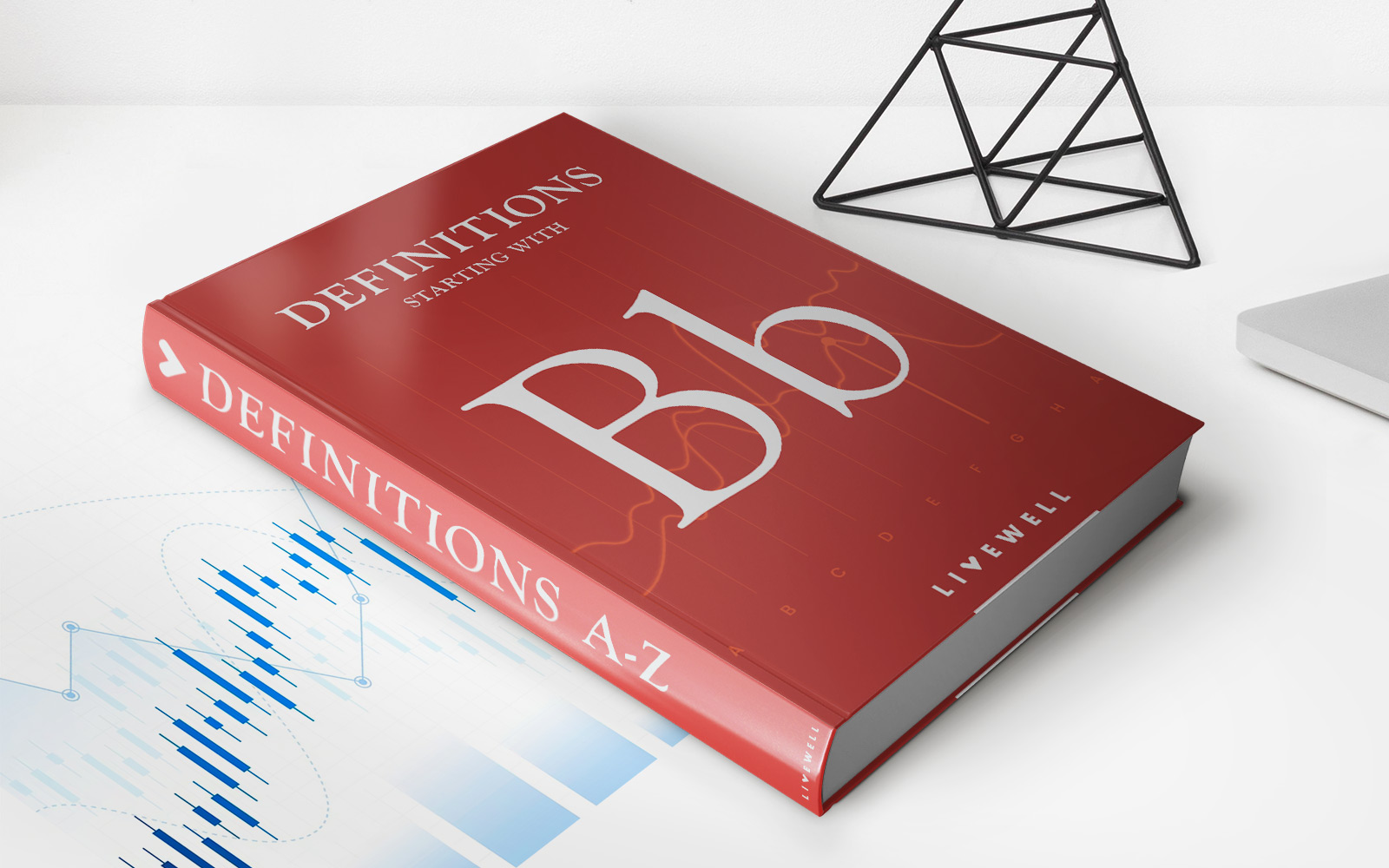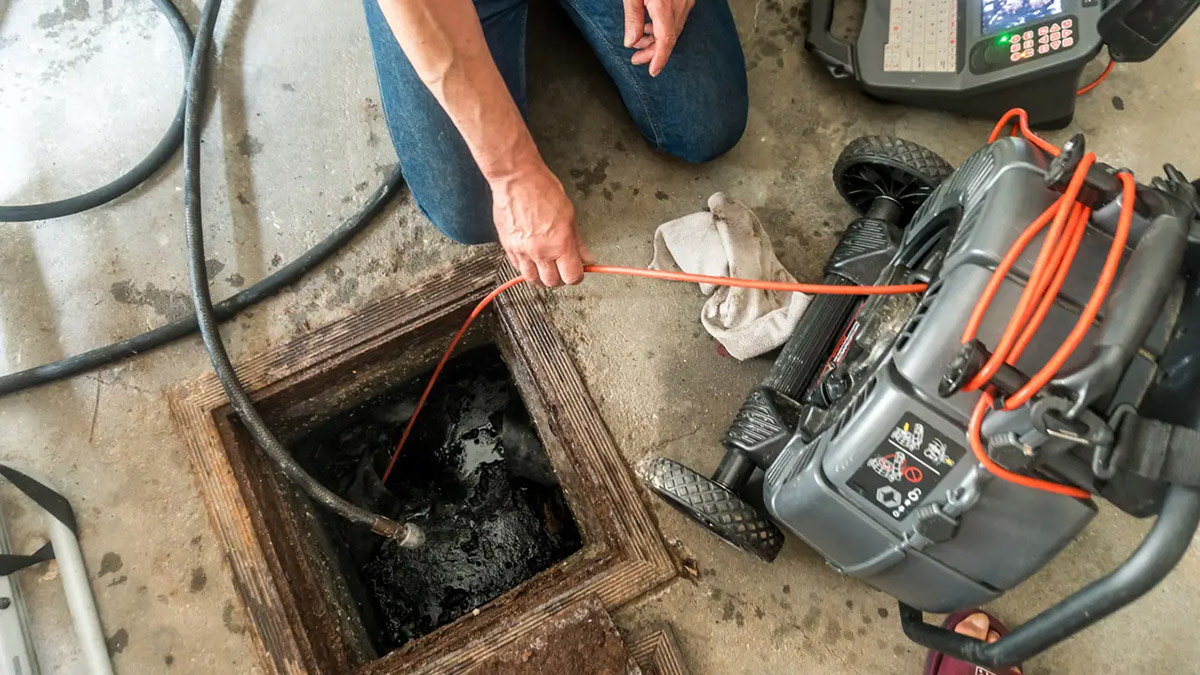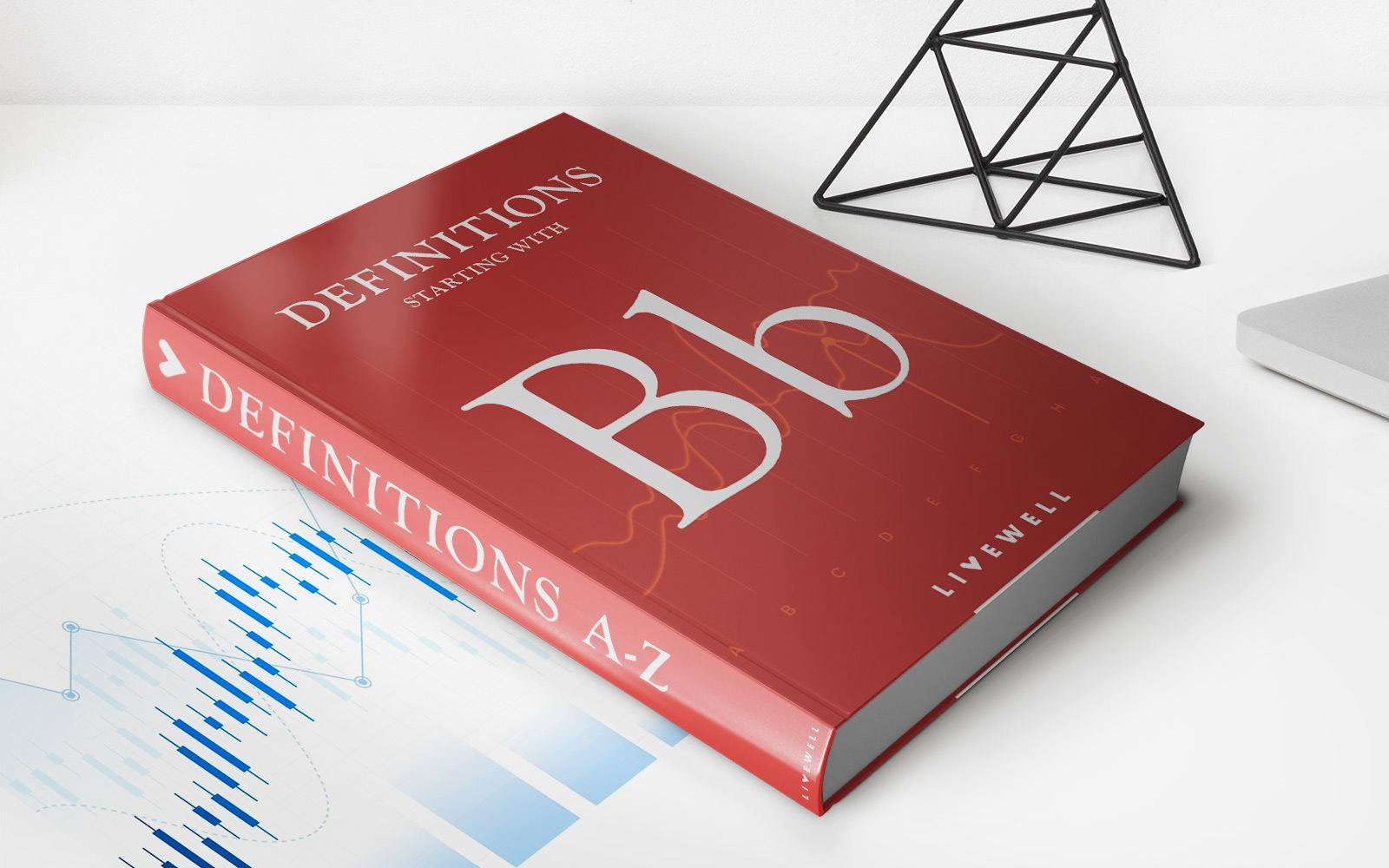

Finance
What Does Broad Form Insurance Cover
Published: November 23, 2023
Discover what broad form insurance covers and how it can provide financial protection for unexpected expenses. Find out more about this type of insurance today.
(Many of the links in this article redirect to a specific reviewed product. Your purchase of these products through affiliate links helps to generate commission for LiveWell, at no extra cost. Learn more)
Table of Contents
- Introduction
- Understanding Broad Form Insurance
- Coverage for Personal Property
- Coverage for Liability
- Coverage for Additional Living Expenses
- Coverage for Medical Payments
- Coverage for Loss of Use
- Exclusions in Broad Form Insurance
- Benefits and Limitations of Broad Form Insurance
- How to Choose the Right Broad Form Insurance Coverage
- Conclusion
Introduction
When it comes to protecting your financial well-being, having the right insurance coverage is crucial. In the realm of insurance, there are various types of policies tailored to meet different needs. One such policy is broad form insurance.
Broad form insurance is a comprehensive coverage option that offers protection for personal property, liability, additional living expenses, medical payments, and loss of use. It is designed to provide a wide range of coverage under a single policy, simplifying the insurance process for policyholders.
Whether you’re a homeowner or a renter, understanding what broad form insurance covers can help you make informed decisions to safeguard your assets and financial security. In this article, we will delve into the specifics of broad form insurance and explore its coverage, benefits, limitations, and how to choose the right policy for your needs.
By the end of this article, you’ll have a clear understanding of what broad form insurance entails, enabling you to make informed choices about protecting yourself and your belongings.
Understanding Broad Form Insurance
Broad form insurance is a type of insurance coverage that provides comprehensive protection for individuals, families, and businesses. Unlike standard insurance policies that may have specific limits and exclusions, broad form insurance offers a broader range of coverage options, giving policyholders greater peace of mind.
One of the key features of broad form insurance is that it provides coverage for multiple areas, including personal property, liability, additional living expenses, medical payments, and loss of use. Let’s take a closer look at each of these coverage areas:
- Personal Property: Broad form insurance protects your personal belongings from a range of perils, such as fire, theft, vandalism, or natural disasters. This coverage extends to items both inside and outside your home, including furniture, appliances, electronics, clothing, and jewelry.
- Liability: Broad form insurance also includes liability coverage, which protects you in case you are held responsible for causing bodily injury or property damage to others. This coverage can help cover legal expenses, medical bills, and property repair costs in the event of a covered claim.
- Additional Living Expenses: In the unfortunate event that your home becomes uninhabitable due to a covered loss, broad form insurance can provide coverage for additional living expenses. This includes costs for temporary housing, meals, and other expenses incurred while your home is being repaired or rebuilt.
- Medical Payments: Broad form insurance typically includes coverage for medical payments, which can help cover medical expenses for guests who are injured on your property, regardless of fault. This coverage can include expenses such as hospital bills, doctor visits, and even rehabilitation costs.
- Loss of Use: If your home becomes temporarily uninhabitable due to a covered loss, broad form insurance can provide coverage for loss of use. This means that the policy can help cover the cost of alternative accommodations, such as a hotel or rental property, until your home is repaired or rebuilt.
It’s important to note that the exact coverage and limits of broad form insurance policies may vary depending on the insurance provider and the specific policy terms. Therefore, it is essential to carefully review the policy documentation and consult with an insurance professional to understand the specific details and limitations of your coverage.
Now that we have a better understanding of what broad form insurance covers, let’s explore the benefits and limitations of this type of coverage in the next section.
Coverage for Personal Property
One of the key components of broad form insurance is its coverage for personal property. This coverage ensures that your belongings are protected in the event of damage, theft, or loss due to covered perils.
Under broad form insurance, personal property coverage extends to a wide range of items both inside and outside your home. This includes furniture, appliances, electronics, clothing, jewelry, and other valuables. In case of a covered event such as a fire, theft, or natural disaster, your insurance policy will provide financial assistance to repair or replace the damaged or stolen items.
It’s important to note that while broad form insurance covers personal property, there may be limits on certain categories of belongings. For example, there may be a sub-limit for valuable items like jewelry or art. It’s advisable to check with your insurance provider to understand the specific limits and any required additional coverage for high-value items.
Additionally, broad form insurance typically covers personal property even when you’re away from home. If your belongings are stolen from your car or lost while you’re traveling, you may still be eligible for compensation under your policy.
To determine the appropriate coverage for your personal property, it’s essential to conduct a thorough inventory of your belongings, including receipts, photographs, and appraisals for high-value items. This will help you accurately assess the value of your possessions and ensure that you have adequate coverage in place.
In the event of a covered loss, it’s crucial to promptly report the incident to your insurance provider and provide any necessary documentation, such as police reports or proof of purchase. This will help expedite the claims process and ensure that you receive the appropriate compensation for your damaged or stolen personal property.
It’s also worth mentioning that certain high-value or rare items may require additional coverage through an endorsement or a separate policy. This ensures that you have sufficient protection for these special items that may exceed the standard coverage limits of your broad form insurance policy.
Having adequate coverage for your personal property under broad form insurance gives you peace of mind knowing that your belongings are protected from various risks. However, it’s important to review the policy details and discuss any specific concerns or coverage requirements with your insurance provider to ensure that you have the appropriate level of protection.
Coverage for Liability
Another important aspect of broad form insurance is its coverage for liability. Liability coverage protects you financially if you are found legally responsible for causing bodily injury or property damage to others. This coverage is essential in today’s litigious society where lawsuits can be costly and unpredictable.
When it comes to liability coverage, broad form insurance offers a robust level of protection. If someone is injured on your property or if you accidentally cause damage to someone else’s property, your insurance policy will help cover the associated medical expenses, legal fees, and any potential settlement or judgment costs.
Liability coverage also extends beyond physical injuries or property damage. It can also provide financial protection if you are held liable for certain non-physical damages, such as defamation or negligence. For example, if you accidentally spread false information about someone that damages their reputation and they sue you for defamation, your broad form insurance can help cover the legal expenses and any potential settlement or judgment costs.
It’s important to note that the liability coverage in broad form insurance typically has a limit specified in the policy. This limit represents the maximum amount your insurance company will pay in the event of a covered liability claim. It is crucial to review your policy and ensure that the liability limit is sufficient to protect your assets and financial well-being.
Keep in mind that liability coverage under broad form insurance generally applies both within and outside your home. If you accidentally cause damage or injury to someone while away from your property, such as at a neighbor’s house or in a public space, your broad form insurance may still provide coverage.
It’s important to understand that broad form insurance does not cover intentional acts or illegal activities. If you intentionally cause harm to someone or engage in criminal behavior, your insurance policy will not provide coverage for any resulting liability claims.
Having liability coverage under your broad form insurance policy is crucial for protecting your financial well-being in the face of unexpected accidents or incidents. It provides you with financial security and peace of mind knowing that you have coverage for potential legal liabilities. However, it is essential to review the specific terms and limits of your liability coverage with your insurance provider to ensure that you have adequate protection in place.
Coverage for Additional Living Expenses
One of the valuable features of broad form insurance is its coverage for additional living expenses. This coverage provides financial support to policyholders who are temporarily displaced from their homes due to a covered loss, such as fire, storm damage, or other unforeseen events.
When your home becomes uninhabitable, whether it requires extensive repairs or is deemed unsafe to live in, the additional living expenses coverage kicks in. This coverage helps cover the costs of temporary housing, meals, and other necessary expenses while your home is being repaired or rebuilt.
The coverage for additional living expenses is designed to provide you and your family with the ability to maintain your normal standard of living despite the disruption caused by the loss. It can include expenses such as hotel or rental accommodation fees, restaurant meals, transportation costs, and even laundromat costs, among other necessary expenses.
It’s important to note that the coverage for additional living expenses has limits specified in your broad form insurance policy. These limits typically correspond to a percentage of your dwelling coverage limit. It’s essential to review your policy and understand the coverage limits to ensure you have adequate coverage for such expenses.
Additionally, it’s important to keep detailed records and receipts for all additional living expenses incurred during your displacement. This documentation will be essential when filing a claim with your insurance provider. Promptly reporting the loss and providing the necessary documentation will help facilitate the claims process and ensure that you receive the appropriate reimbursement for your expenses.
It’s worth noting that the coverage for additional living expenses usually has a time limit. This means that your policy will outline the maximum duration for which reimbursement for these expenses is provided. It’s important to coordinate with your insurance provider and stay updated on the progress of the repairs or rebuilding of your home to ensure that you make the necessary arrangements for alternative accommodation within the specified time limit.
Having coverage for additional living expenses under your broad form insurance policy provides you with the peace of mind and financial support to navigate through a temporary displacement from your home. It allows you to focus on the necessary steps to restore your home without being burdened by the financial strain of finding temporary housing and meeting other daily living needs.
It’s important to review the specific terms and limits of the additional living expenses coverage in your broad form insurance policy to ensure that you understand the scope of the coverage and have sufficient protection for such unforeseen circumstances.
Coverage for Medical Payments
In addition to protecting your property and liability, broad form insurance also provides coverage for medical payments. This coverage helps cover the medical expenses of individuals who are injured on your property, regardless of fault.
Under the medical payments coverage of broad form insurance, if someone sustains an injury on your property, your insurance policy will help cover their necessary medical expenses. This can include costs such as hospital bills, doctor visits, diagnostic tests, and even rehabilitation expenses related to the injury.
Medical payments coverage is designed to provide timely financial support to injured individuals, allowing them to seek necessary medical treatment without delay. It can help mitigate potential legal claims and ensure that medical expenses are taken care of promptly.
It’s important to note that medical payments coverage generally has limits outlined in your broad form insurance policy. This represents the maximum amount your insurance provider will pay for medical expenses per injured person or incident. It’s advisable to review your policy and ensure that the coverage limit is sufficient to provide adequate protection.
The coverage for medical payments under broad form insurance is applicable within the boundaries of your property. This means that if a visitor, guest, or even a trespasser gets injured on your premises, your insurance policy may still provide coverage for their medical expenses. However, it’s important to consult with your insurance provider to understand any specific restrictions or limitations regarding coverage for injuries sustained by trespassers.
It’s important to promptly report any incidents or injuries that occur on your property to your insurance provider and provide any necessary documentation, such as medical reports or invoices. This will help facilitate the claims process and ensure that the injured parties receive the appropriate coverage for their medical expenses.
It’s worth noting that the medical payments coverage in broad form insurance is designed to provide immediate assistance and doesn’t require the injured party to prove fault or negligence. It provides a sense of security knowing that if someone is injured on your property, you have coverage to help them with their medical expenses.
Having coverage for medical payments under your broad form insurance policy not only protects the injured individuals but also helps protect your own financial well-being. It provides you with the assurance that you can assist others in case of accidents or injuries and helps maintain positive relationships with visitors and guests to your property.
Reviewing the specific terms and limits of the medical payments coverage in your broad form insurance policy is essential to ensure that you have the appropriate level of protection for potential medical expenses that may arise on your property.
Coverage for Loss of Use
Loss of Use coverage is an important component of broad form insurance that provides financial support when your home becomes temporarily uninhabitable due to a covered loss. This coverage helps cover the additional living expenses you may incur while your home is being repaired or rebuilt.
In the unfortunate event that your home is damaged and rendered uninhabitable, Loss of Use coverage kicks in to provide reimbursement for the expenses you incur for alternative accommodations. This can include costs for temporary housing, such as renting an apartment or staying in a hotel, as well as other necessary expenses like meals or transportation.
The Loss of Use coverage in broad form insurance is specifically designed to assist you during the period when you are unable to reside in your home. The coverage is typically limited to a specified duration, outlined in your insurance policy. It’s important to review this time limit and ensure that it aligns with the estimated timeframe for repairs or rebuilding.
When filing a claim for Loss of Use coverage, it’s crucial to keep records and receipts for all expenses related to your temporary living arrangements. This documentation will be required to support your claim and ensure that you receive the appropriate reimbursement.
It’s important to note that Loss of Use coverage is not applicable if the temporary displacement from your home is due to other reasons such as voluntary relocation or renovations. It is specifically designed to provide support in situations where your home is uninhabitable due to a covered loss.
Loss of Use coverage is an essential component of broad form insurance as it provides you with the financial means to maintain a semblance of normalcy during a challenging time. It allows you to focus on addressing the damage to your home and ensures that you and your family have a safe and comfortable living arrangement until your home is restored.
Reviewing the specific terms and limits of Loss of Use coverage in your broad form insurance policy is crucial to ensure that you have the appropriate level of protection and reimbursement for the additional living expenses you may incur during the period of displacement.
Exclusions in Broad Form Insurance
While broad form insurance provides comprehensive coverage, it’s important to be aware of the exclusions that may apply to your policy. Exclusions are specific situations or events that are not covered by your insurance policy. Understanding these exclusions will help you manage your expectations and plan accordingly for potential risks.
Here are some common exclusions in broad form insurance:
- Earthquakes and Floods: Many broad form insurance policies do not provide coverage for damage caused by earthquakes or floods. If you live in an area prone to these natural disasters, you may need to consider purchasing separate policies or endorsements to ensure you have adequate coverage.
- Intentional Acts: Broad form insurance does not cover damages or losses that result from intentional acts. If you intentionally cause damage to your own property or engage in illegal activities that lead to a loss, your insurance policy will not provide coverage.
- Normal Wear and Tear: Broad form insurance is designed to protect against sudden and accidental damage, not normal wear and tear. Any damages that occur as a result of aging, deterioration, or lack of maintenance will typically not be covered by your policy.
- Business and Commercial Activities: Broad form insurance is primarily intended for personal use. If you conduct business or commercial activities from your home, such as running a home-based business, your policy may not provide coverage for business-related liabilities or property damage. You may need to consider separate business insurance policies to adequately protect your business interests.
- High-Risk Pets: Some broad form insurance policies may exclude coverage for certain types of high-risk pets, such as exotic animals or aggressive dog breeds. It’s important to check the policy terms and consult with your insurance provider regarding coverage for pets.
It’s crucial to review the specific exclusions outlined in your broad form insurance policy documentation. Familiarize yourself with the limitations and exclusions to fully understand the scope of your coverage.
If there are specific risks or circumstances that are not covered by your broad form insurance policy, you may have the option to purchase additional coverage or endorsements to fill those gaps. Working with an insurance professional and discussing your needs and concerns can help you identify any necessary supplemental coverage.
Understanding the exclusions in your broad form insurance policy allows you to make informed decisions about prioritizing additional coverage or taking other preventive measures to mitigate risks that are not covered. Regularly reviewing and updating your policy will help ensure that you have the appropriate level of protection for your needs.
Benefits and Limitations of Broad Form Insurance
Broad form insurance offers several advantages and benefits that make it a popular choice for individuals and families seeking comprehensive coverage. However, like any insurance policy, there are also limitations to consider. Understanding both the benefits and limitations will help you make an informed decision about whether broad form insurance is suitable for your needs.
Here are some key benefits of broad form insurance:
- Comprehensive Coverage: Broad form insurance provides coverage for multiple areas, including personal property, liability, additional living expenses, medical payments, and loss of use, all under a single policy. This comprehensive coverage ensures that you have protection against a wide range of risks and potential losses.
- Convenience and Simplicity: With broad form insurance, you have the convenience of having multiple coverage types bundled into one policy. This simplifies the insurance process, as you only need to manage a single policy and make a single premium payment.
- Peace of Mind: Having broad form insurance gives you peace of mind, knowing that you have coverage in case of unexpected events or accidents. It provides financial security and protects your assets and belongings, reducing the financial burden and stress associated with unforeseen losses.
- Flexibility in Coverage Limits: Broad form insurance policies often provide flexibility in choosing the coverage limits that best suit your needs and budget. This allows you to customize your policy to ensure that you have adequate protection without overpaying for unnecessary coverage.
While broad form insurance offers many benefits, it’s important to consider the limitations as well:
- Exclusions and Limitations: Broad form insurance may have specific exclusions, such as earthquakes, floods, intentional acts, or high-risk pets, that may require additional coverage or separate policies. It’s essential to carefully review the exclusions and limitations of your policy to understand the scope of coverage.
- Premium Costs: Comprehensive coverage generally comes with a higher premium cost compared to basic insurance policies. While the convenience and peace of mind are valuable, it’s important to assess your budget and ensure that the benefits of broad form insurance outweigh the costs.
- Policy Documentation: Broad form insurance policies can be extensive, with detailed terms, conditions, and coverage limits. It’s important to thoroughly review and understand the policy documentation, ensuring you comply with requirements and procedures to avoid any potential coverage disputes.
- High-Value Items: While broad form insurance covers personal property, there may be limitations on coverage for high-value items such as jewelry or art. Assessing the coverage limits for these valuable possessions and considering additional coverage or separate policies may be necessary.
Ultimately, the benefits of broad form insurance, such as comprehensive coverage and peace of mind, often outweigh the limitations. However, it’s important to carefully assess your specific needs, review policy documentation, and consult with an insurance professional to determine if broad form insurance is the right fit for you.
How to Choose the Right Broad Form Insurance Coverage
Choosing the right broad form insurance coverage is crucial to ensure that you have adequate protection for your assets and belongings. Here are some key factors to consider when selecting the right policy:
1. Evaluate your needs: Assess your specific insurance needs by considering factors such as the value of your personal property, the size and location of your home, and your level of risk tolerance. This evaluation will help you determine the appropriate coverage limits and identify any additional coverage needs.
2. Research insurance providers: Look for reputable insurance providers with a track record of reliable and responsive service. Research their financial stability, customer reviews, and the range of coverage options they offer. Consider seeking recommendations from friends, family, and insurance professionals to narrow down your options.
3. Compare coverage options and limits: Review the coverage options and limits provided by different insurance providers. Ensure that the broad form insurance policy covers all the essential areas such as personal property, liability, additional living expenses, medical payments, and loss of use. Compare the coverage limits and make sure they align with your needs.
4. Consider endorsements or additional coverage: Determine if any specific risks are not covered by the broad form insurance policy and consider whether you need to purchase additional coverage or endorsements. For example, if you live in an area prone to floods or earthquakes, you may need to consider separate policies to protect against these risks.
5. Review deductibles and premiums: Assess the deductibles and premiums associated with different broad form insurance policies. Deductibles are the amount you need to pay out of pocket before the insurance coverage kicks in, while premiums are the regular payments you make to maintain the policy. Strike a balance between affordable premiums and a deductible that you can comfortably manage in case of a claim.
6. Examine policy exclusions: Carefully review the exclusions in the broad form insurance policy. Understand any limitations and ensure that you can comply with the policy terms. If you have specific concerns or unique circumstances, discuss them with the insurance provider to explore options for additional coverage.
7. Consult with an insurance professional: Seek advice from an experienced insurance professional who can guide you through the process of selecting the right broad form insurance coverage. They can help assess your needs, answer your questions, and provide recommendations based on their expertise.
Remember, choosing the right broad form insurance coverage is a personal decision. Take your time, thoroughly research the options available to you, and consider seeking professional guidance to ensure that you have the right level of coverage for your peace of mind and financial protection.
Conclusion
Broad form insurance is a comprehensive coverage option that provides protection for personal property, liability, additional living expenses, medical payments, and loss of use. It offers a wide range of coverage under a single policy, simplifying the insurance process and providing peace of mind to policyholders.
Understanding what broad form insurance covers is essential in order to make informed decisions about safeguarding your assets and financial security. By having coverage for personal property, liability, additional living expenses, medical payments, and loss of use, you can have peace of mind knowing that you are protected from various risks and potential losses.
While broad form insurance offers many benefits, it’s important to consider the limitations and exclusions of the policy. Familiarize yourself with the specific terms, conditions, and coverage limits to ensure that the policy meets your needs and expectations.
When choosing the right broad form insurance coverage, evaluate your needs, research insurance providers, compare coverage options and limits, and consider any additional or supplemental coverage you may require. Consult with an insurance professional who can provide guidance and help you make an informed decision based on your circumstances.
Remember, the goal of broad form insurance is to provide comprehensive coverage and financial protection in the face of unexpected events or accidents. By choosing the right policy and understanding its terms and limitations, you can have the peace of mind knowing that you have the appropriate level of protection for your home, personal belongings, and liability.
Take the time to review your policy, regularly assess your coverage needs, and make any necessary adjustments to ensure that your broad form insurance continues to meet your evolving requirements. By doing so, you can enjoy the peace of mind and financial security that comes with having the right insurance coverage in place.














